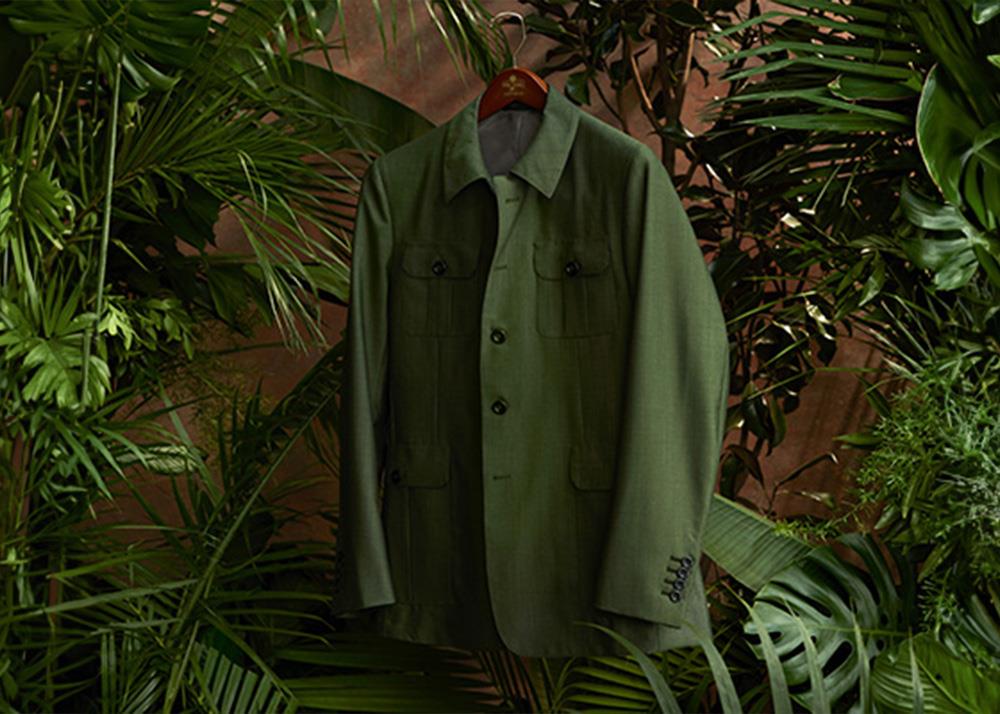Cape Town Sustainable Fashion: Redefining Design with Ethical Options
Cape Town Sustainable Fashion: Redefining Design with Ethical Options
Blog Article
Remain Ahead of the Contour by Exploring Cutting-edge Style Patterns
In a market as vibrant as fashion, staying ahead entails greater than simply following existing fads-- it requires an exploration of innovation. Smart fabrics, for instance, are transforming garments right into practical masterpieces, while 3D printing is transforming style processes with its personalized, waste-reducing abilities. As sustainability ends up being a foundation, developments like environmentally friendly products and round style methods are improving environmental duty - Cape Town Sustainable Fashion. In addition, the merging of technology and fashion declares a new age of customer involvement. How, then, can these emerging patterns redefine the future of fashion, and what effects do they hold for brands looking for to prosper in this advancing landscape?

Accepting Smart Textiles
In recent times, the fashion business has seen a transformative change with the integration of wise fabrics, an advanced technology that mixes modern technology with textile. This development represents not just a combination of looks and performance however likewise a significant leap in the direction of sustainability and personalization in vogue. Smart textiles, also called e-textiles, installed sophisticated electronic devices such as sensors and conductive strings within the material, enabling garments to interact with the user or the environment.
These textiles are created to monitor physical criteria, such as heart rate or body temperature, giving real-time wellness analytics. Past wellness applications, wise fabrics are also being utilized for flexible clothing, which can alter shade or pattern in action to environmental stimuli, thus supplying a vibrant fashion experience.
Additionally, the growth of energy-harvesting textiles that generate power from activity or sunshine is leading the way for self-dependent wearable modern technology. This development is interesting environmentally mindful customers and designers intending to lower the environmental impact of fashion. As r & d in this area development, clever textiles are anticipated to become progressively widespread, improving the landscape of contemporary style with their multifunctional capabilities.
The Surge of 3D Printing
Transforming the manufacturing landscape, 3D printing has actually emerged as a game-changer in the garment industry. This innovative innovation has allowed designers to push the boundaries of imagination, producing intricate and tailored garments that were previously unthinkable. By leveraging digital design and additive production, 3D printing helps with the creation of intricate geometries and patterns, enabling designers to explore new textures and frameworks.
A remarkable advantage of 3D printing in style is its capability to produce on-demand, reducing waste and minimizing inventory requirements. This performance not only enhances production processes but also enables fast prototyping, allowing developers to bring their visions to life in a much shorter duration. Furthermore, 3D printing supports customization somewhat unequaled by typical techniques, offering special designs and individualized fits tailored to specific consumer preferences.
The rise of 3D printing has actually likewise democratized fashion, making it obtainable to emerging designers that can currently fabricate top quality pieces without substantial economic investment in typical manufacturing framework. As innovation proceeds to breakthrough, the apparel industry is poised to harness the complete capacity of 3D printing, checking out new materials and methods that will undoubtedly redefine how style is conceived and created.
Lasting Fashion Developments
As the fashion business grapples with the pushing need for environmental duty, lasting fashion technologies have arised at the leading edge of transformative change. The expanding recognition of eco-friendly influence has sustained a shift towards even more eco-conscious practices and materials. Brand names and developers are now focusing on sustainability, integrating techniques that lessen waste and decrease carbon footprints.
One substantial growth is the surge of circular style, which highlights recycling and upcycling to prolong the lifecycle of garments. This strategy not only lowers waste yet additionally urges consumers to adopt a much more conscious approach to garments consumption. Additionally, making use of lasting products, such as natural cotton, hemp, and recycled polyester, has gotten traction. These products need much less water and energy throughout manufacturing, considerably lessening ecological influence.
An additional breakthrough depends on the adoption of ingenious dyeing techniques that make use of waterless procedures or natural dyes, therefore decreasing the large amounts of water and chemicals typically utilized in fabric dyeing. In addition, advancements in biotechnology have resulted in the production of lab-grown natural leather and materials, providing cruelty-free and eco friendly alternatives to traditional products. Through these introducing efforts, the fashion sector is making significant strides towards a more sustainable future.

Tech-Integrated Garments
Tech-integrated apparel represents a revolutionary fusion of fashion and technology, improving just how individuals interact with their apparel. This ingenious domain name is marked by the inclusion of smart textiles and embedded digital components, enhancing both capability and aesthetic charm. From physical fitness trackers installed in sports apparel to heated coats regulated through smart device apps, tech-integrated garments provides consumers extraordinary ease and versatility.
Introducing brand names are driving this fad, focusing on producing garments that react to ecological stimulations or customer commands. For example, some garments can alter color or pattern in action to temperature level shifts, while others include biometric sensors to monitor wellness metrics like heart price or stress and anxiety degrees. The smooth combination of innovation into textiles likewise reaches environmental sustainability, with efforts to create self-cleaning fabrics or garments that adapt to weather, therefore decreasing the need for several layers.
Moreover, the arrival of wearable technology is not simply limited to garments however reaches address devices like watches and eyeglasses, additional broadening the scope of tech-integrated fashion. As the industry continues to innovate, the possibility for customization and customization in apparel grows, supplying consumers distinct, tech-enhanced fashion experiences that accommodate their private demands and choices.
Future of Virtual Style
In recent times, the future of online fashion has actually arised as a transformative force within the industry, leveraging improvements in digital modern technology to redefine exactly how my explanation fashion is created, experienced, and eaten. By integrating augmented reality (AR), online fact (VIRTUAL REALITY), and 3D design tools, designers can now craft interactive and immersive experiences that transcend standard fashion boundaries. Digital fashion permits for the development of garments that exist only in electronic atmospheres, offering countless possibilities for innovation without the limitations of physical production.
This digital change not only provides chances for innovative expression however additionally addresses sustainability worries integral in traditional fashion methods. Cape Town Sustainable Fashion. By removing the requirement for physical sources, virtual style reduces waste and minimizes carbon impacts. Moreover, the surge of digital fashion straightens with the raising consumer demand for special and individualized experiences, as virtual garments can be tailored and customized to specific choices effortlessly

Verdict
The style market's future lies in the combination of cutting-edge modern technologies and lasting methods - Cape Town Sustainable Fashion. Smart fabrics and tech-integrated clothing are boosting performance, while 3D printing uses chances for personalization and waste decrease. Sustainable style, through circular methods and environmentally friendly materials, shows a dedication to environmental stewardship. Additionally, digital style is poised to redefine customer interactions. Adapting to these patterns is vital for brand names seeking to remain appropriate and affordable in this swiftly evolving landscape.
In recent years, the style sector has observed a transformative shift with the integration of smart fabrics, an innovative technology that blends technology with textile.As the fashion sector grapples with the pressing demand for ecological duty, lasting fashion developments have actually arised at the forefront of transformative adjustment.In current years, the future of online fashion has emerged as a transformative pressure within the market, leveraging innovations her response in electronic modern technology to redefine exactly how style is produced, experienced, and eaten. The increase of online style aligns with the increasing customer need for personalized and unique experiences, as online garments can be personalized and tailored to private preferences with convenience.
The fashion sector's future lies in the assimilation of sustainable techniques and ingenious technologies.
Report this page